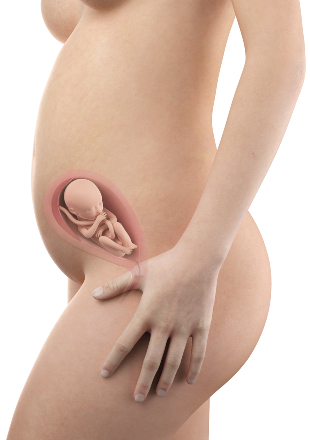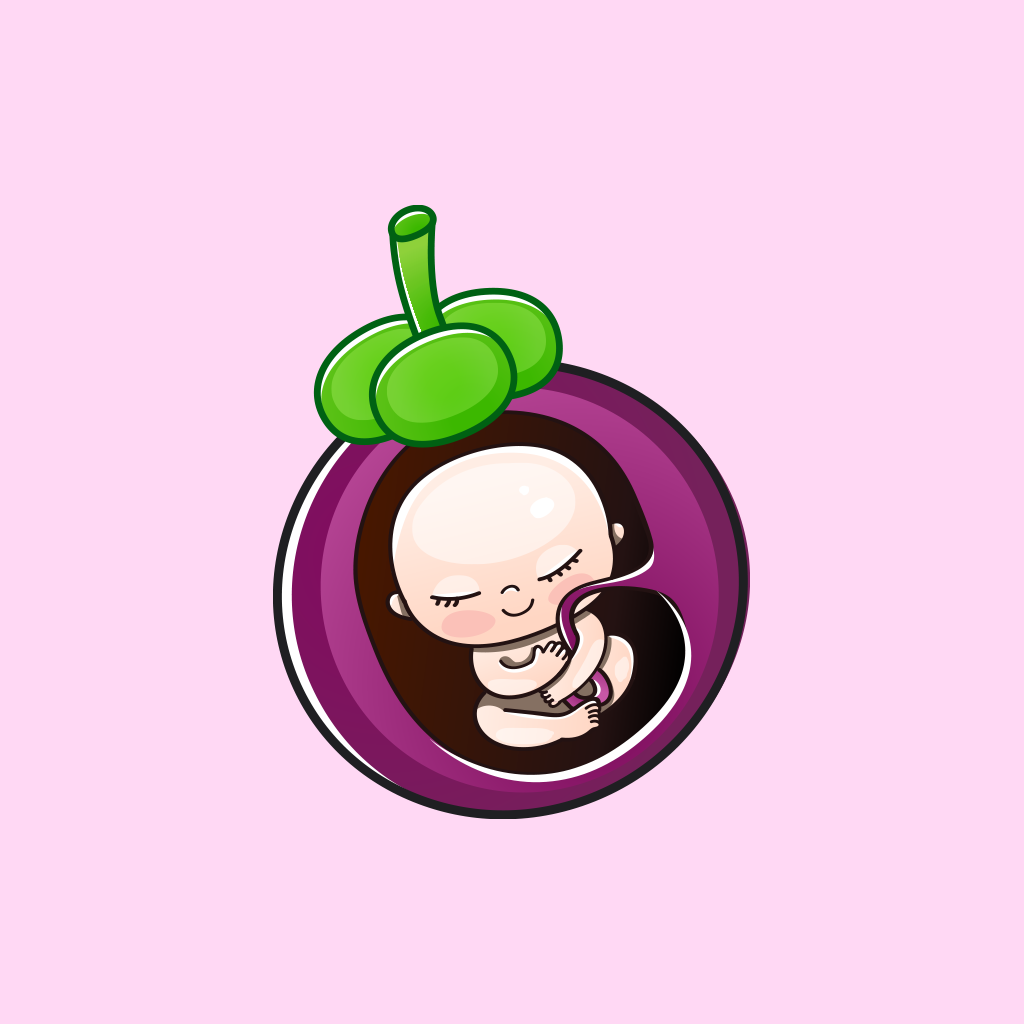Congratulations, you’ve reached the halfway mark of your pregnancy! Week 20 is a meaningful milestone for expectant mothers, filled with excitement, a few new changes, and the chance to learn more about your baby’s development. It’s completely normal to have a mix of emotions as you settle into the second half of this journey, and remember — you’re doing an amazing job.
By this point, you might be starting to really “show,” and many women feel more comfortable sharing their news with friends and coworkers. Your growing belly is a beautiful sign of the life blossoming inside you. Around this week, you’ll likely be scheduled for your mid-pregnancy ultrasound, sometimes known as the anatomy scan. This special appointment helps your care team check on your baby’s growth and development — often, you’ll get to see little arms, legs, and maybe even catch a glimpse of your baby moving around!
Your baby is now about the size of a sweet potato, measuring around 6 to 7 inches long and weighing about 10 ounces. Inside the womb, your baby’s organs and senses are developing rapidly. Tiny fingerprints form on their fingers, and they can hear muffled sounds, like the rhythm of your heartbeat or the tone of your voice. Don’t be surprised if you start to feel gentle flutters, kicks, or little rolls — these first movements are called “quickening” and often feel like butterflies in your belly.

You might notice changes in your own body, too. Some moms experience mild aches as their uterus grows, or find their appetite increasing. It’s also common to feel more energetic than in early pregnancy, so take advantage of bursts of motivation to prepare for baby or simply enjoy some self-care. If you ever have questions or concerns, don’t hesitate to reach out to your healthcare provider — every pregnancy is unique, and you deserve to feel supported and confident.
Week 20 is about celebrating how far you and your little one have come and looking forward to all that’s ahead. Take time to marvel at the small milestones and nurture your own wellbeing — you’re halfway there!
Your Baby’s Development This Week
Congratulations, you’ve reached the halfway mark—20 weeks! This is a truly exciting time, as your baby is now growing and changing in ways you can both see and feel. Let’s take a gentle look at the developments happening with your little one right now.
At this stage, your baby is about the size of a sweet potato or banana—around 6.3 inches (16 centimeters) from head to bottom and weighing about 11 ounces (312 grams). Inside your growing belly, your baby is busy practicing important skills and making big leaps in development.
- Miniature Movements: You may start noticing your baby’s first gentle kicks, wiggles, or flutters—what many moms call “quickening.” These early movements might feel like bubbles, butterflies, or a soft tapping. If you haven’t felt them yet, don’t worry; every pregnancy is unique, and some women feel them later.
- Tiny Details Forming: This week, your baby’s unique fingerprints and footprints are coming in. All those tiny whorls and patterns are already starting to take shape, making your baby one-of-a-kind.
- Sucking and Swallowing: Your baby now has a fully developed sucking reflex. In fact, you might even catch a glimpse of your little one sucking their thumb during your next ultrasound. They are also swallowing small amounts of amniotic fluid, helping to “practice” for feeding after birth.
- Skin and Protective Coating: Though your baby’s skin is still thin and a bit see-through, it’s busy forming new layers. A creamy, white substance called vernix caseosa is beginning to cover the skin, keeping it safe and moist while floating in the amniotic fluid.
- Sleepy Times: Your baby is starting to develop a routine of sleep and awake cycles. These patterns will become more regular as the weeks go by, though you might notice more movement when you’re resting or at night.
- Taste Buds Developing: Taste buds are hard at work, picking up flavors from the foods you eat that enter the amniotic fluid. This early exposure may even shape some of your baby’s food preferences later on!
Right now, your baby’s organs—like the heart, brain, liver, and kidneys—are continuing to grow and specialize. Their nerves are connecting more efficiently, especially between their brain and tiny muscles, making movements smoother and stronger each day.
If you have your 20-week anatomy scan scheduled soon, it’s the perfect opportunity to see just how much your child has changed. The sonographer will check your baby’s heart, spine, brain, and other organs to make sure everything is developing well. Many parents also find out the baby’s sex during this ultrasound (if you want to know!), making this appointment a very special milestone.
Take a moment to marvel at how far you and your baby have come together. The second half of your pregnancy is ahead, with even more incredible changes on the way. Remember, each day brings more growth, more connection, and more reasons to look forward to meeting your little one.
Changes in the Mother’s Body
Reaching the 20th week of pregnancy is a big moment! You’re now halfway through, and you may really start to notice more obvious changes in your body—inside and out. Every pregnancy is a little different, but here are some of the most common experiences at this stage:
Your Growing Bump
Your belly is probably getting more prominent now, and you might find that your favorite clothes don’t fit the same way anymore. Around this time, your uterus has stretched to about the height of your belly button. Many moms-to-be enjoy showing off their “baby bump,” and you may get more comments or questions from friends and family who have noticed the change.
Feeling Baby’s First Movements
One of the most exciting changes at 20 weeks is that you may begin feeling small movements from your baby, often called “quickening.” These first flutters can feel like gentle bubbles or soft taps in your belly. If you haven’t felt them yet, don’t worry—it’s normal for this to happen a little later, especially in first pregnancies.
Body Aches and Growing Pains
- Round ligament pain: As your uterus expands, it stretches the ligaments in your lower belly. You might feel quick, sharp pains on either side, especially when you move suddenly. Taking it easy and changing positions slowly can help.
- Back discomfort: Your shape is shifting, and it’s common to get some lower backaches as your center of gravity changes. Supportive shoes and gentle stretching can make a big difference.
Noticeable Physical Symptoms
- Skin changes: Some moms notice darker patches on their face or a dark line running from belly button to pubic bone. This is normal and usually fades after birth. Stay safe in the sun and use gentle skincare products.
- Swelling: Mild puffiness in your hands and feet is common now, as your body holds onto extra fluid. Propping up your feet when you rest and wearing comfortable shoes may help.
- Increased appetite: With morning sickness often behind you, you might feel hungrier. Focus on healthy snacks and meals to fuel you and your growing baby.
Energy and Sleep Changes
Some moms find a burst of energy around this time, while others may notice continued tiredness. You might start having trouble sleeping comfortably as your bump grows. Try using a pillow between your legs or behind your back to support your body at night.
Digestive Ups and Downs
Heartburn or indigestion can pick up during the second trimester, partly because your baby is taking up more space. Eating smaller, more frequent meals and avoiding spicy or greasy foods may help keep you comfortable.
Remember, all these changes are signs that your body is working hard to support your growing baby. If anything feels unusual or you have concerns, don’t hesitate to check in with your healthcare provider—they’re there to help you every step of the way!
Your 20-Week Pregnancy Checkup: What to Expect
Congratulations—you’ve reached the halfway point of your pregnancy! Around 20 weeks, your doctor or midwife will want to take a close look at both you and your baby’s health. This is a really important stage, where you gain new insights into your baby’s development and get some helpful reassurance about how things are going.
Here are the main checkups and screenings you can expect at this exciting milestone:
- The Big Ultrasound (Anatomy Scan): This is one of the most detailed scans you’ll have during pregnancy. The technician will move a wand gently over your belly to look closely at all of your baby’s organs, bones, and body parts, making sure they’re growing as they should. They’ll check your baby’s heart, brain, spine, stomach, and little fingers and toes. If you’re curious about your baby’s sex, this is often when you can find out! Even if you decide not to know, the scan still helps make sure everything looks healthy and on track.
- Measuring Your Belly: Your provider will start using a measuring tape to check what’s called your “fundal height”—basically, measuring from your pubic bone to the top of your uterus. This helps track how your baby (and your bump!) is growing.
- Checking Vital Signs: You’ll still get your blood pressure checked, as well as your weight. These steps help catch potential issues like high blood pressure or too much (or too little) weight gain as early as possible so they can support you with any needed changes.
- Listening to Baby’s Heartbeat: Most moms love this part! Your provider will use a small device (like a handheld Doppler) to let you hear your baby’s heartbeat. It’s both a safety check and a wonderful chance to connect with your little one.
- Checking In About Symptoms: Don’t be shy—now’s a great time to mention anything unusual you’ve noticed, like extra swelling, uncomfortable aches, or trouble sleeping. Your doctor wants to hear about your experience so they can help you feel your best.
- Blood and Urine Tests (if needed): If you haven’t had certain routine tests yet, or if there are specific things your doctor wants to monitor (like your blood sugar or iron levels), lab work may be recommended at this visit. This helps spot things like anemia or early signs of gestational diabetes.
- Talking About What’s Next: Your provider will likely discuss what to look out for during the next few weeks—such as baby’s movements, signs of preterm labor, and what’s coming up in terms of education or hospital tours. This is a good time to ask about birthing classes or breastfeeding resources if you’re interested.
Your 20-week visit is much more than a quick check-in—it’s a chance to get to know your baby’s development in detail and ensure you’re both healthy and supported. Enjoy this milestone and don’t hesitate to bring along your questions. Every step contributes to a safe and joyful journey for you and your baby!
Nutritional Tips and Physical Exercise
At 20 weeks, your body is working hard to support your growing baby, so focusing on nutrition and gentle movement can make a real difference in how you feel. The right foods give your baby the nutrients needed for healthy development, and keeping active can ease common pregnancy discomforts.
Here’s how you can take good care of yourself this week:
- Make protein a priority: Lean meats, eggs, beans, lentils, and dairy are all excellent protein sources that help your baby’s tissues and organs grow. Try to include a source of protein at every meal.
- Pack in colorful fruits and veggies: Aim to fill half your plate with a variety of fruits and vegetables. These foods not only provide vitamins and minerals, but also fiber, which can help prevent constipation — a common struggle for many moms-to-be.
- Choose whole grains: Oatmeal, brown rice, quinoa, and whole wheat bread are great choices. Whole grains supply lasting energy and key nutrients like iron and B vitamins, which are especially important right now.
- Stay hydrated: Try to drink about 8-10 glasses of water each day. Water supports your increased blood volume and helps prevent swelling and headaches. Sometimes adding a slice of lemon or cucumber can make water more appealing if you’re not feeling thirsty.
- Healthy snacks: Hunger may be picking up, so keep healthy snacks on hand. Yogurt with berries, hummus with carrots, or a small handful of mixed nuts are all smart options that will help you stay satisfied between meals.
- Watch your calcium and iron: Dairy products, leafy greens, seeds, and lean meats all help meet your calcium and iron needs, which are higher during pregnancy. Pair iron-rich foods with vitamin C (like strawberries or bell peppers) to help your body absorb more iron.
Alongside good nutrition, staying active brings many benefits for you and your baby. Gentle exercise can help with backache, boost your mood, and make sleep easier — plus, it prepares you for labor and recovery.
Here are safe ways you can move your body:
- Daily walks: A 20 to 30-minute walk at your own pace is an easy way to stretch your muscles and get fresh air. Walking is safe for most pregnant women and can help improve circulation.
- Prenatal yoga or stretching: Gentle stretching or joining a prenatal yoga class (online or in-person) can ease tension in your muscles and help with posture as your belly grows.
- Swimming or water aerobics: If you have access to a pool, swimming is gentle on your joints and helps keep you cool, especially as your pregnancy progresses.
- Legs up for relief: Sitting or lying down with your legs elevated for a little while each day can reduce swelling in your feet and ankles.
- Listen to your body: If you feel dizzy, short of breath, or overtired, take a break and rest. Avoid risky activities or anything that could cause you to lose balance.
Every small healthy choice helps. Feel free to ask your healthcare provider if you have questions about specific foods or exercises, and remember, taking care of yourself is one of the best gifts you give your little one. You are doing an amazing job!
Weekly Checklist
Congratulations on reaching the halfway mark of your pregnancy! This week is special, and taking small steps now can help you and your baby stay healthy and happy.
Here’s a practical list of things you can do during Week 20:
- Go for your anatomy scan ultrasound: If you haven’t already, schedule and attend this detailed ultrasound. It gives a clear picture of how your baby is growing and developing. It’s an exciting milestone and a great time to invite your partner, too!
- Take note of your baby’s movements: You may feel gentle flutters or tiny kicks now. Each baby is unique, so jot down when you feel these movements. It’s reassuring and will help your doctor monitor your baby’s wellbeing.
- Track your weight gain and appetite: As your hunger increases, aim for healthy meals and snacks. Listen to your body, but keep your nutrition in mind—think fruits, vegetables, lean proteins, and whole grains.
- Start managing round ligament pain: If you feel twinges on the sides of your belly, rest and gentle stretching can help. Try changing positions slowly, and use a pillow for extra support when you sleep.
- Begin sleeping on your side: Lying on your left side improves blood flow to the baby and can help ease swelling. Use a pregnancy pillow or extra cushions to get more comfortable at night.
- Drink more water throughout the day: Staying hydrated supports your growing blood volume and helps prevent headaches and swelling. Fill up a reusable water bottle to have handy.
- Moisturize your skin daily: As your belly grows, your skin stretches. Applying a gentle moisturizer or oil after showers can soothe itchiness and may help with stretch marks.
- Get familiar with common discomforts: Learn about symptoms like heartburn, nosebleeds, and body aches. Knowing what’s normal can give you peace of mind, and helps you know when to reach out to your healthcare provider.
- Discuss any concerns at your medical appointment: Make a note of any unusual symptoms, and bring them up with your doctor or midwife. No question is too small!
- Start thinking about childbirth classes: Look into in-person or online prenatal classes in your area. It’s a great way to prepare for labor and delivery, and to connect with other expecting parents.
- Capture this special moment: Take a bump photo or start a journal about your pregnancy experiences. This can become a cherished memory for you and your baby in years to come.
Remember, each day brings wonderful changes. Listen to your body and reach out if you need support. You’re doing a fantastic job!
When to Call Your Doctor
At 20 weeks, most of what you feel is perfectly normal, even if it’s new and sometimes a little uncomfortable. Still, your peace of mind matters, and there are certain signs that mean you should reach out to your healthcare provider right away. It’s always better to check in if something doesn’t feel right.
Here are some things to look out for:
- Heavy Vaginal Bleeding or Passing Clots: Spotting can be common, but if you notice more than a few drops—especially if the blood is bright red or you’re passing clots—call your doctor promptly.
- Severe or Persistent Abdominal Pain: Mild, brief twinges or stretching sensations can happen as your body grows, but strong or unrelenting pain (especially if it comes with bleeding or fever) isn’t typical and should be checked.
- Leaking Fluid: If you feel a sudden gush or a constant trickle of clear or pale yellow fluid from your vagina, it could mean your amniotic sac is leaking. Let your provider know immediately.
- No Baby Movement After Previously Feeling It: By this point, you might be feeling gentle kicks or flutters. If these suddenly lessen or stop after you’ve started noticing them, contact your healthcare provider, especially if a full day goes by without any movement.
- Chills, High Fever, or Signs of Infection: Fever over 100.4°F (38°C), chills, or feeling seriously unwell (like you’re getting the flu) could signal an infection and should be reported.
- Severe Headaches That Don’t Go Away: Mild headaches can be routine, but severe headaches—especially those that linger or come with vision changes or swelling—shouldn’t be ignored.
- Blurred Vision, Dizziness, or Spots in Your Eyes: If you suddenly have trouble seeing, or you feel faint or dizzy, let your doctor know as these could be signs of high blood pressure or other issues that need attention.
- Painful or Burning Urination: A burning feeling when you pee, pain in your lower belly, or needing to go much more often—especially with fever—could mean a urinary tract infection, which is important to treat promptly during pregnancy.
- Sudden or Severe Swelling: Some swelling is normal, especially in your feet and ankles, but if you notice sudden puffiness in your hands, face, or around your eyes, mention it to your provider. This could hint at high blood pressure or another concern.
- Persistent Vomiting: Occasional nausea is common, but if you can’t keep fluids down at all and start to feel dehydrated, it’s time to check in.
- Any Other Gut Instinct That Something Isn’t Right: You know your body best. If you’re worried or something just doesn’t seem normal, it’s always okay to call. Your provider wants you to feel safe and supported.
Remember, you’re not alone on this journey. No question or concern is too small—your comfort and your baby’s well-being both matter. When in doubt, a quick call to your doctor can help you feel reassured and get any needed care quickly.
Preparations for Baby
Reaching 20 weeks is a wonderful milestone—you’re officially halfway there! It’s normal to feel a mix of excitement and nerves as you start to imagine holding your baby. This is a great time to begin simple preparations, both practical and emotional, to help you feel more ready for your baby’s arrival.
- Start a baby essentials list: Walk through your home and jot down a list of basics you’ll need for the first weeks: a safe place for baby to sleep, a few outfits in newborn and 0-3 month sizes, diapers, and wipes. Don’t worry about getting everything at once—just prioritizing the must-haves can ease stress.
- Plan a calm spot for baby: Choose a peaceful spot in your home for feeding, rocking, or comforting your baby. This could be a cozy corner with a comfy chair, soft light, and a small table for snacks or books.
- Talk with your partner or support team: Start open conversations about daily routines, visitors after birth, and how you’ll support each other when baby arrives. Sharing expectations early makes things easier later on.
- Practice self-kindness: Spend a few minutes each day doing something just for you—a walk, a favorite book, or a relaxing bath. Self-care isn’t selfish; it helps you be at your best for baby.
- Create a keepsake: Begin a simple pregnancy journal, scrapbook, or photo log to capture your thoughts and bump photos. These small memories will be meaningful to look back on after baby arrives.
- Research childcare options, if needed: If you’ll need daycare or help from others, now is a good time to explore your options or ask friends about their experiences. Good arrangements can have waiting lists, so early planning pays off.
- Enjoy bonding moments: Place your hands on your belly and talk, sing, or read to your baby. It may feel a little silly, but your baby can now hear sounds and may even respond to your voice!
Every step you take isn’t just preparing your home—it’s preparing your heart. Remember, you don’t have to do everything perfectly or all at once. Your love and care are what truly make home ready for your little one.
Citations and References
- American College of Obstetricians and Gynecologists (ACOG) – Provides guidelines for prenatal care, including the 20-week anatomy scan and expected physical changes. Visit Source
- Centers for Disease Control and Prevention (CDC) – Offers facts on fetal development at 20 weeks and tips for healthy pregnancy practices. Visit Source
- World Health Organization (WHO) – Recommends routine prenatal screenings and provides international standards for antenatal care. Visit Source
- Mayo Clinic – Summarizes fetal growth, maternal changes, and symptoms expected at 20 weeks gestation. Visit Source
- Cleveland Clinic – Details the purpose and timing of the mid-pregnancy ultrasound along with common maternal symptoms and self-care tips at 20 weeks. Visit Source
- National Institutes of Health (NIH) – MedlinePlus – Covers fetal development milestones, maternal body changes, and nutritional guidelines for mid-pregnancy. Visit Source










